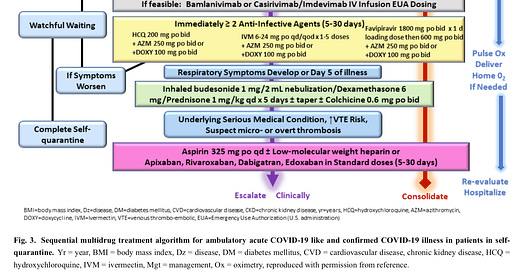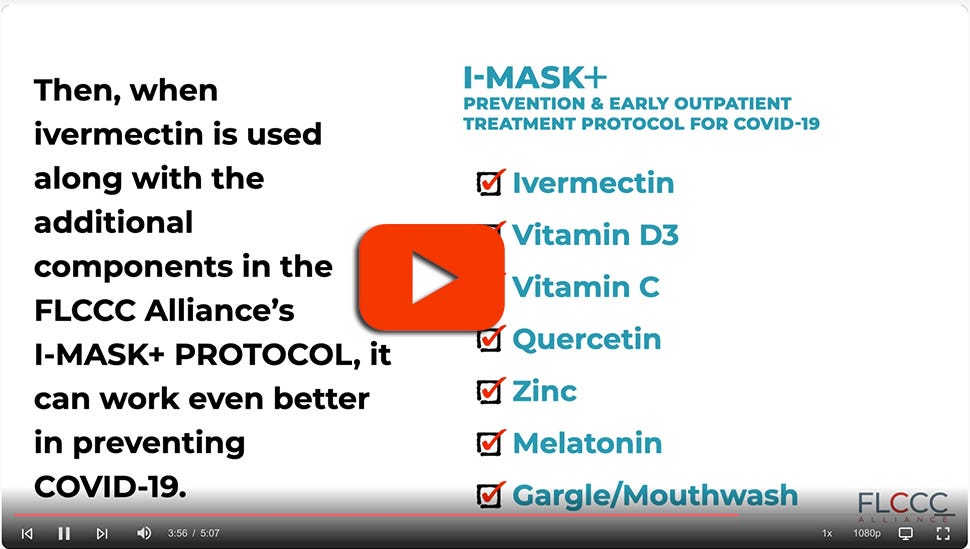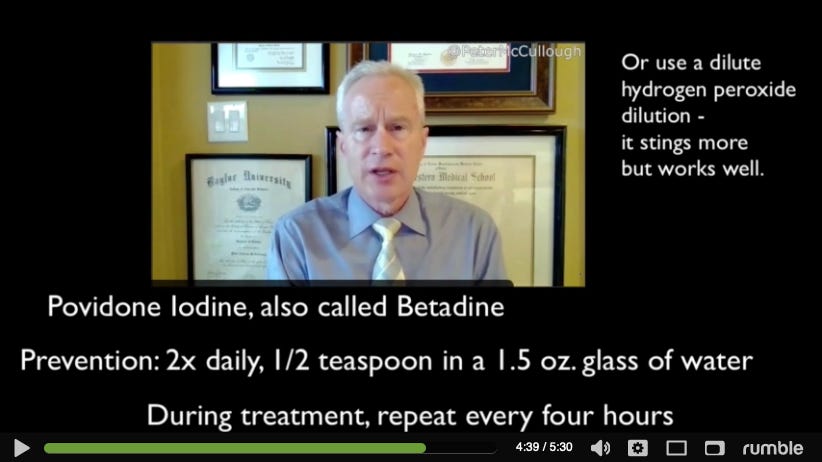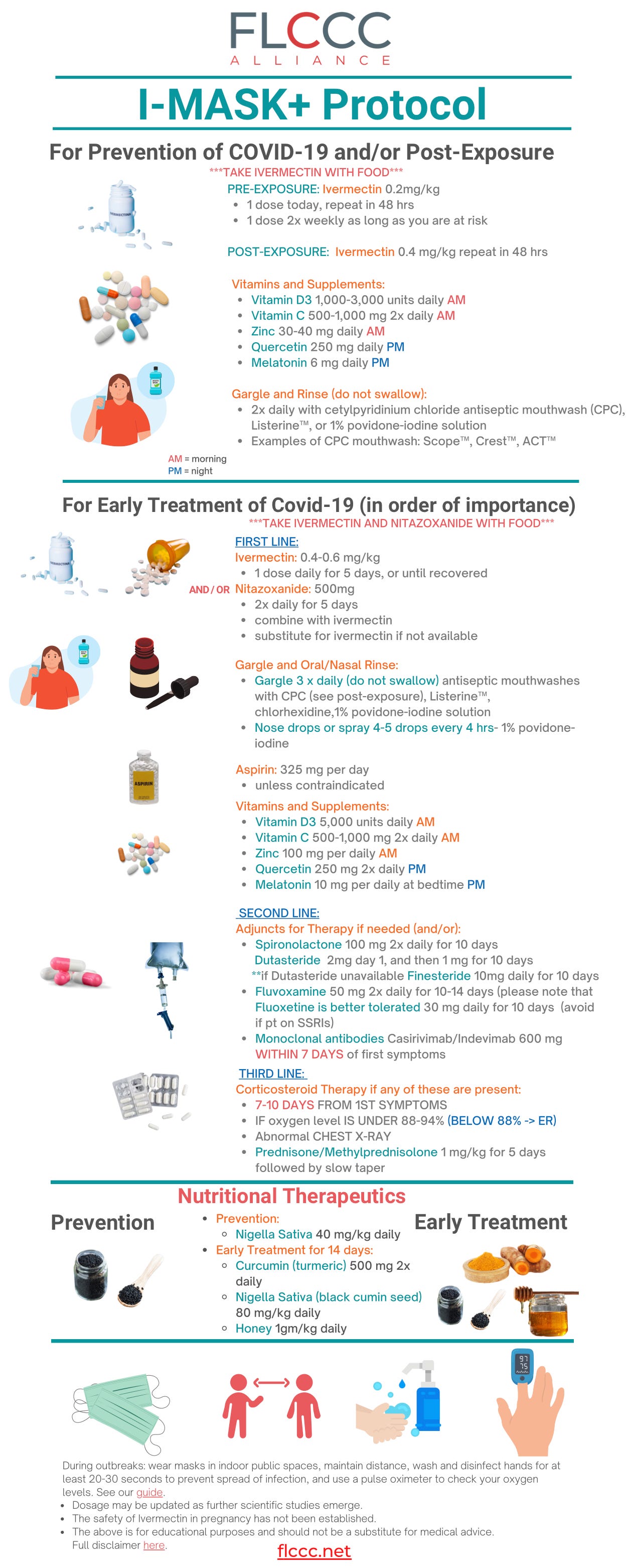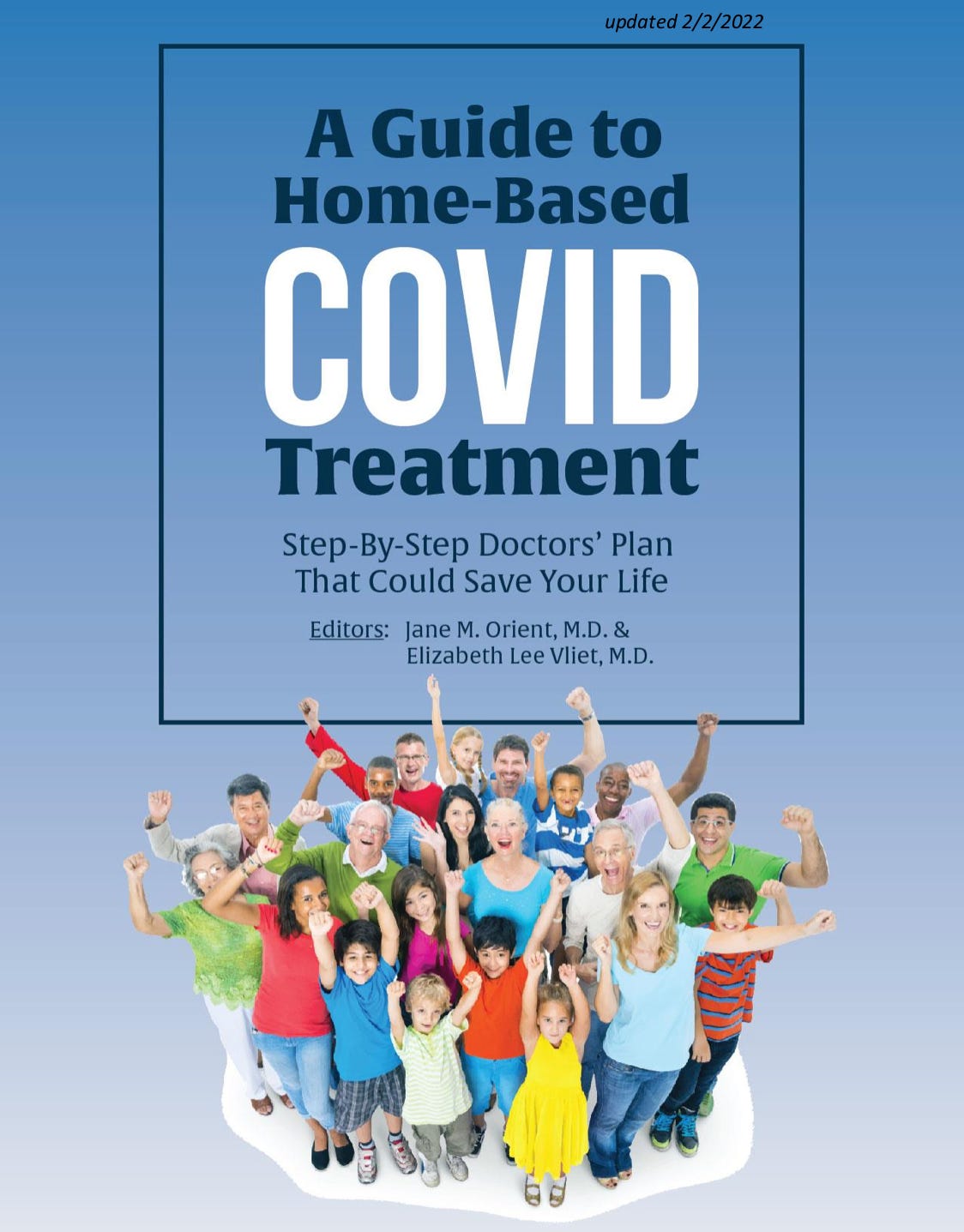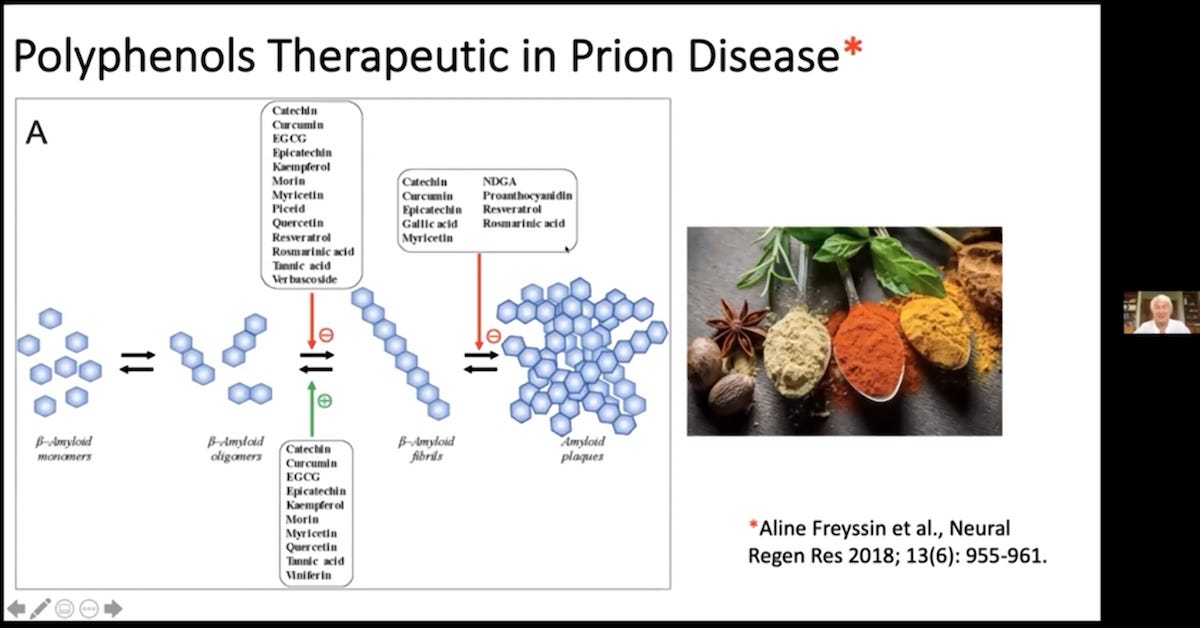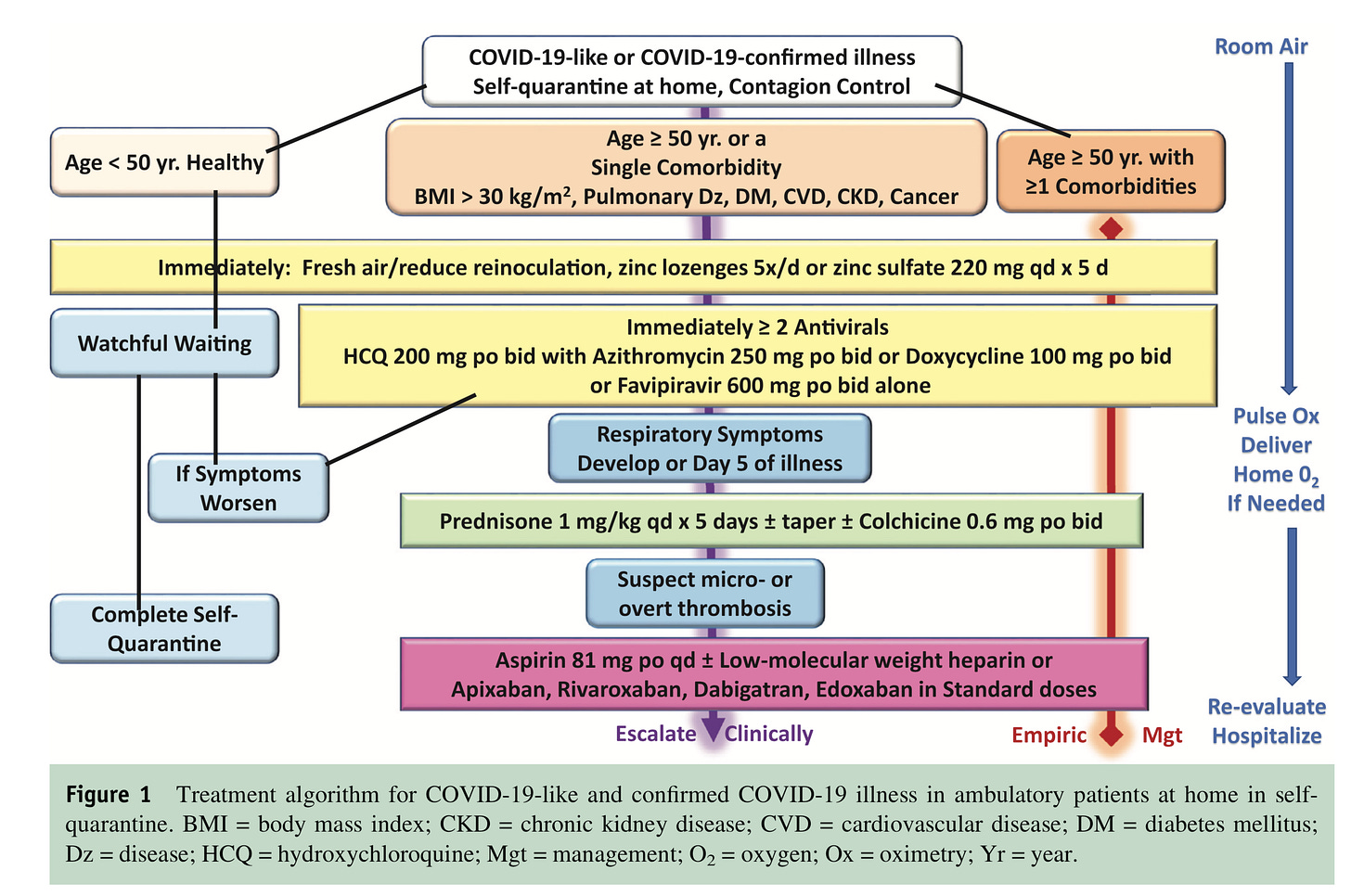COVID-19 prevention and early treatment
Global COVID Summit | International Alliance of Physicians & Medical Scientists
COVID-19 Vaccines & Children: A Scientist’s Guide for Parents (CCCA)
Patient Guide to Early COVID Treatment (Truth for Health Foundation)
COVID-19 Treatment Guides (incl. nasal & oral) (Truth for Health Foundation)
Physicians/Facilities Offering Early Treatment
Post-COVID-19 vaccination guides, Long COVID treatment
Dr. McCullough on povidone iodine use (Treatment guide) (Choudhury et al., 2021)
Dr. McCullough’s podcast: “At-Home Management of COVID-19”, 2022.01
COVID-19 Early Treatment, Dr. Vliet, President & CEO, Truth for Health Foundation
Dr. Stephanie Seneff: Covid-19 Vaccines & Neurodegenerative Disease, WCH, 2022.01
Kerr et al., Cureus, 2022.01
“Results: Of the 223,128 citizens of Itajaí considered for the study, a total of 159,561 subjects were included in the analysis: 113,845 (71.3%) regular ivermectin users and 45,716 (23.3%) non-users. Of these, 4,311 ivermectin users were infected, among which 4,197 were from the city of Itajaí (3.7% infection rate), and 3,034 non-users (from Itajaí) were infected (6.6% infection rate), with a 44% reduction in COVID-19 infection rate (risk ratio [RR], 0.56; 95% confidence interval (95% CI), 0.53-0.58; p < 0.0001). Using PSM, two cohorts of 3,034 subjects suffering from COVID-19 infection were compared. The regular use of ivermectin led to a 68% reduction in COVID-19 mortality (25 [0.8%] versus 79 [2.6%] among ivermectin non-users; RR, 0.32; 95% CI, 0.20-0.49; p < 0.0001). When adjusted for residual variables, reduction in mortality rate was 70% (RR, 0.30; 95% CI, 0.19-0.46; p < 0.0001). There was a 56% reduction in hospitalization rate (44 versus 99 hospitalizations among ivermectin users and non-users, respectively; RR, 0.44; 95% CI, 0.31-0.63; p < 0.0001). After adjustment for residual variables, reduction in hospitalization rate was 67% (RR, 0.33; 95% CI, 023-0.66; p < 0.0001).
Conclusion: In this large PSM study, regular use of ivermectin as a prophylactic agent was associated with significantly reduced COVID-19 infection, hospitalization, and mortality rates.”
The mechanisms of action of ivermectin against SARS-CoV-2—an extensive review
Zaidi and Dehgani-Mobaraki, The Journal of Antibiotics, 2021.12
“Considering the urgency of the ongoing COVID-19 pandemic, detection of new mutant strains and potential re-emergence of novel coronaviruses, repurposing of drugs such as ivermectin could be worthy of attention. This review article aims to discuss the probable mechanisms of action of ivermectin against SARS-CoV-2 by summarizing the available literature over the years. A schematic of the key cellular and biomolecular interactions between ivermectin, host cell, and SARS-CoV-2 in COVID-19 pathogenesis and prevention of complications has been proposed.”
Bryant, Lawrie, et al., American Journal of Therapeutics, 2021.07
Conclusions: “Moderate-certainty evidence finds that large reductions in COVID-19 deaths are possible using ivermectin. Using ivermectin early in the clinical course may reduce numbers progressing to severe disease. The apparent safety and low cost suggest that ivermectin is likely to have a significant impact on the SARS-CoV-2 pandemic globally.”
Tess Lawrie, MBBCh, PhD (E-BMC, World Council for Health)
Santin et al., New Microbes and New Infections, 2021.09
“In 2015, the Nobel Committee for Physiology or Medicine, in its only award for treatments of infectious diseases since six decades prior, honoured the discovery of ivermectin (IVM), a multifaceted drug deployed against some of the world’s most devastating tropical diseases. Since March 2020, when IVM was first used against a new global scourge, COVID-19, more than 20 randomized clinical trials (RCTs) have tracked such inpatient and outpatient treatments. Six of seven meta-analyses of IVM treatment RCTs reporting in 2021 found notable reductions in COVID-19 fatalities, with a mean 31% relative risk of mortality vs. controls. During mass IVM treatments in Peru, excess deaths fell by a mean of 74% over 30 days in its ten states with the most extensive treatments. Reductions in deaths correlated with the extent of IVM distributions in all 25 states with p < 0.002. Sharp reductions in morbidity using IVM were also observed in two animal models, of SARS-CoV-2 and a related betacoronavirus. The indicated biological mechanism of IVM, competitive binding with SARS-CoV-2 spike protein, is likely non-epitope specific, possibly yielding full efficacy against emerging viral mutant strains.”
McCullough et al., Reviews in Cardiovascular Medicine, 2020.12
“The SARS-CoV-2 virus spreading across the world has led to surges of COVID-19 illness, hospitalizations, and death. The complex and multifaceted pathophysiology of life-threatening COVID-19 illness including viral mediated organ damage, cytokine storm, and thrombosis warrants early interventions to address all components of the devastating illness. In countries where therapeutic nihilism is prevalent, patients endure escalating symptoms and without early treatment can succumb to delayed in-hospital care and death. Prompt early initiation of sequenced multidrug therapy (SMDT) is a widely and currently available solution to stem the tide of hospitalizations and death. A multipronged therapeutic approach includes 1) adjuvant nutraceuticals, 2) combination intracellular anti-infective therapy, 3) inhaled/oral corticosteroids, 4) antiplatelet agents/anticoagulants, 5) supportive care including supplemental oxygen, monitoring, and telemedicine. Randomized trials of individual, novel oral therapies have not delivered tools for physicians to combat the pandemic in practice. No single therapeutic option thus far has been entirely effective and therefore a combination is required at this time. An urgent immediate pivot from single drug to SMDT regimens should be employed as a critical strategy to deal with the large numbers of acute COVID-19 patients with the aim of reducing the intensity and duration of symptoms and avoiding hospitalization and death.”
McCullough et al., American Journal of Medicine, 2020.08
“Approximately 9 months of the severe acute respiratory syndrome coronavius-2 (SARS-CoV-2 [COVID-19]) spreading across the globe has led to widespread COVID-19 acute hospitalizations and death. The rapidity and highly communicable nature of the SARS-CoV-2 outbreak has hampered the design and execution of definitive randomized, controlled trials of therapy outside of the clinic or hospital. In the absence of clinical trial results, physicians must use what has been learned about the pathophysiology of SARS-CoV-2 infection in determining early outpatient treatment of the illness with the aim of preventing hospitalization or death. This article outlines key pathophysiological principles that relate to the patient with early infection treated at home. Therapeutic approaches based on these principles include 1) reduction of reinoculation, 2) combination antiviral therapy, 3) immunomodulation, 4) antiplatelet/antithrombotic therapy, and 5) administration of oxygen, monitoring, and telemedicine. Future randomized trials testing the principles and agents discussed will undoubtedly refine and clarify their individual roles; however, we emphasize the immediate need for management guidance in the setting of widespread hospital resource consumption, morbidity, and mortality.”
Ivermectin: enigmatic multifaceted ‘wonder’ drug continues to surprise and exceed expectations
Crump, Journal of Antibiotics, 2017.02
“Over the past decade, the global scientific community have begun to recognize the unmatched value of an extraordinary drug, ivermectin, that originates from a single microbe unearthed from soil in Japan. Work on ivermectin has seen its discoverer, Satoshi Ōmura, of Tokyo’s prestigious Kitasato Institute, receive the 2014 Gairdner Global Health Award and the 2015 Nobel Prize in Physiology or Medicine, which he shared with a collaborating partner in the discovery and development of the drug, William Campbell of Merck & Co. Incorporated. Today, ivermectin is continuing to surprise and excite scientists, offering more and more promise to help improve global public health by treating a diverse range of diseases, with its unexpected potential as an antibacterial, antiviral and anti-cancer agent being particularly extraordinary.”
